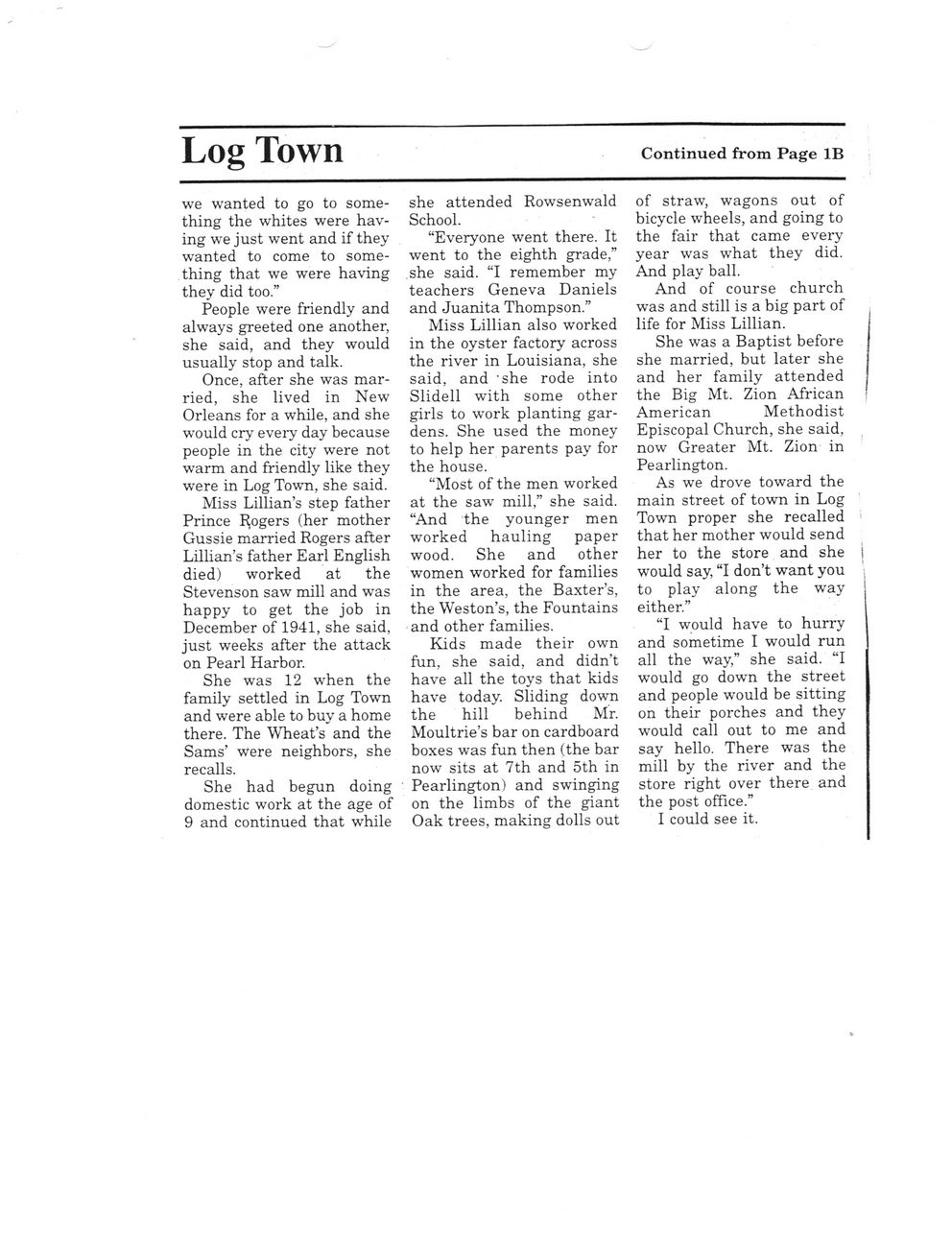This text was obtained via automated optical character recognition.
It has not been edited and may therefore contain several errors.
Log Town Continued from Page IB we wanted to go to something the whites were having we just went and if they wanted to come to something that we were having they did too.” People were friendly and always greeted one another, she said, and they would usually stop and talk. Once, after she was married, she lived in New Orleans for a while, and she would cry every day because people in the city were not warm and friendly like they were in Log Town, she said. Miss Lillian’s step father Prince Rogers (her mother Gussie married Rogers after Lillian’s father Earl English died) worked at the Stevenson saw mill and was happy to get the job in December of 1941, she said, just weeks after the attack on Pearl Harbor. She was 12 when the family settled in Log Town and were able to buy a home there. The Wheat’s and the Sams’ were neighbors, she recalls. She had begun doing domestic work at the age of 9 and continued that while she attended Rowsenwald School. “Everyone went there. It went to the eighth grade,” she said. “I remember my teachers Geneva Daniels and Juanita Thompson.” Miss Lillian also worked in the oyster factory across the river in Louisiana, she said, and she rode into Slidell with some other girls to work planting gardens. She used the money to help her parents pay for the house. “Most of the men worked at the saw mill,” she said. “And the younger men worked hauling paper wood. She and other women worked for families in the area, the Baxter’s, the Weston’s, the Fountains and other families. Kids made their own fun, she said, and didn’t have all the toys that kids have today. Sliding down the hill behind Mr. Moultrie’s bar on cardboard boxes was fun then (the bar now sits at 7th and 5th in Pearlington) and swinging on the limbs of the giant Oak trees, making dolls out of straw, wagons out of bicycle wheels, and going to the fair that came every year was what they did. And play ball. And of course church was and still is a big part of life for Miss Lillian. She was a Baptist before she married, but later she and her family attended the Big Mt. Zion African American Methodist Episcopal Church, she said, now Greater Mt. Zion in Pearlington. As we drove toward the main street of town in Log Town proper she recalled that her mother would send her to the store and she would say, “I don’t want you to play along the way either.” “I would have to hurry and sometime I would run all the way,” she said. “I would go dowrn the street and people would be sitting on their porches and they would call out to me and say hello. There was the mill by the river and the store right over there and the post office.” I could see it.

Logtown Lost communities of Hancock County - Miss Lillian's Logtown (3)